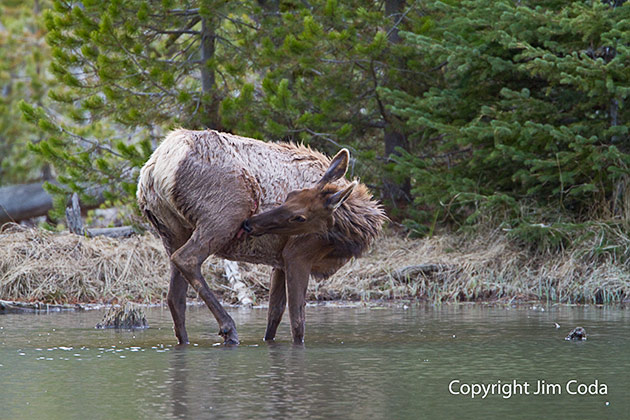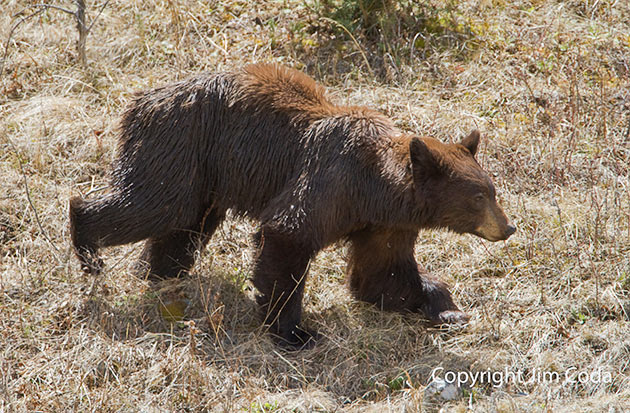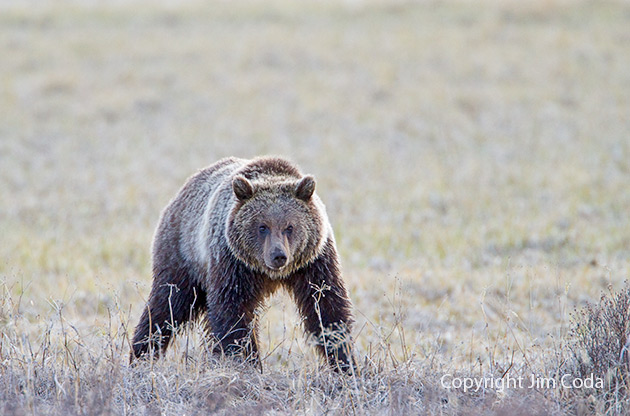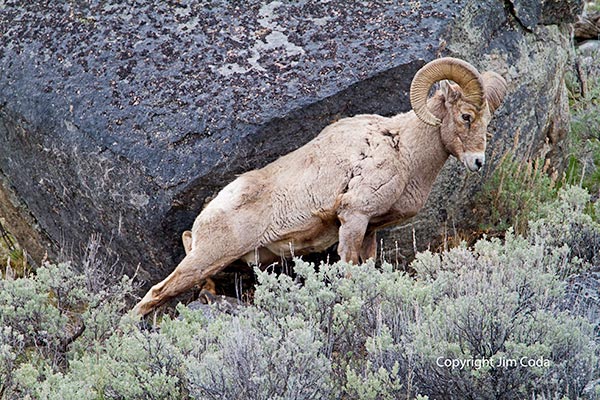The Bison of Yellowstone
In my last post about baby bison I said that seeing and photographing them gave me a new appreciation of the adults. But for that I might not have stopped to watch and photograph this cow bison as she grazed on the succulent grasses in this pond. I wonder what the starlings are saying?

Bison sometimes get into trouble when they enter the waters of Yellowstone. Not far from this tiny pond is Blacktail Pond. At the time I took this photo (May 2010) there were two bison carcasses in Blacktail. I’m not sure how they got in there, but once they got in they were in trouble. Blacktail is much deeper than this little pond and it has very steep banks. Because of its body shape, I think a bison would have a tougher time getting out of Blacktail Pond than any other species of Yellowstone. Their deaths, however, provided needed protein for several predators this spring. I saw grizzlies, wolves, bald eagles, ravens and at least one coyote feed on those carcasses.







